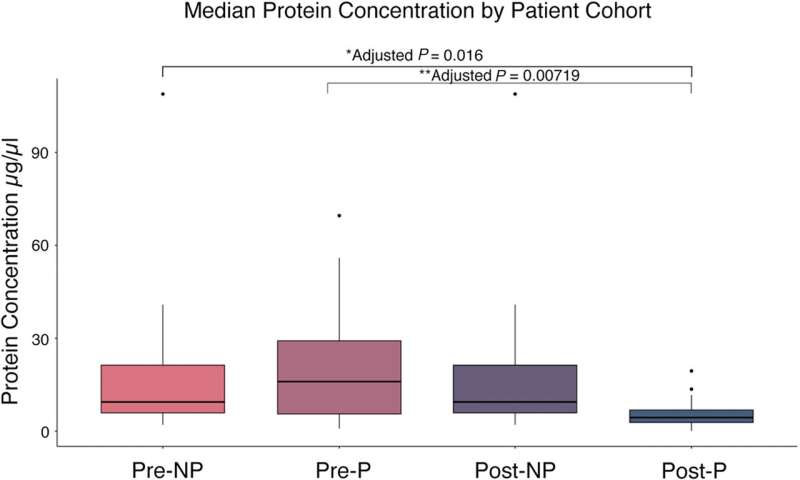This article has been reviewed according to Science X's editorial process and policies. Editors have highlighted the following attributes while ensuring the content's credibility:
fact-checked
trusted source
proofread
Early diagnosis of pelvic floor disorders key for health

Pelvic floor disorders (PFDs), which occur when women's pelvic floor muscles are weakened or injured, significantly affect quality of life and require surgery for hundreds of thousands in the U.S. each year. Now a study led by UT Southwestern Medical Center researchers has found a noninvasive test that could identify women at risk for these conditions and improve treatment.
The study, published in Aging Medicine, discovered that proteins associated with cellular senescence, or cell aging, can be measured in vaginal secretions using a swab test. The research also found that these proteins were elevated in postmenopausal women with prolapse, which confirms the role of cellular aging in the formation of pelvic organ prolapse (POP).
"One of the main risk factors for prolapse is vaginal childbirth, but we know that most women don't have prolapse right away," said lead author Maria Florian-Rodriguez, M.D., Assistant Professor of Obstetrics and Gynecology at UTSW. "They develop it 15-20 years later. It's very hard to follow one subject for that amount of time. The fact that we are able to swab and look at these proteins means that we might be able to identify women at risk early on."
Pelvic floor disorders, including POP and both urinary and fecal incontinence, affect nearly 24% of women in the U.S., according to the National Institutes of Health. The number of PFD patients who require surgery is expected to increase 47% in the next several decades. Although not life-threatening, PFDs can have a serious effect on patients' lives.
POP occurs when support for pelvic organs such as the bladder and uterus weakens, causing these organs to drop from their normal positions. In advanced stages of POP, the organs can bulge into the vagina, causing issues with urination, numbness or discomfort during sex, and a lump protruding from the vagina. The discomfort and psychological distress from POP cause many patients to isolate.
"We have women with POP who used to exercise and walk every day, but now they don't do it because it's bothersome or they don't understand the condition," said Dr. Florian-Rodriguez, who is also a Dedman Family Scholar in Clinical Care at UTSW. "It has a great psychological impact that can cause women to retreat, and then it's like a snowball effect. It affects their mental health, they have depression, and then it starts affecting their relationships."
Despite impacts on quality of life and increasing health care burdens, progression and prevention of POP are not fully understood. Outcomes are further complicated by high failure rates among surgeries for the disorder.
By identifying pelvic floor disorders earlier and tracking their progression, doctors can prescribe preventive measures such as weight loss, a high-fiber diet, pelvic floor exercises, and smoking cessation. Long-term tracking also will allow better understanding and improve treatment.
More information: Polina Sawyer et al, Quantification of senescence‐associated secretory phenotype proteins in the vaginal secretions of pre‐ and postmenopausal women with and without prolapse, AGING MEDICINE (2023). DOI: 10.1002/agm2.12255




















